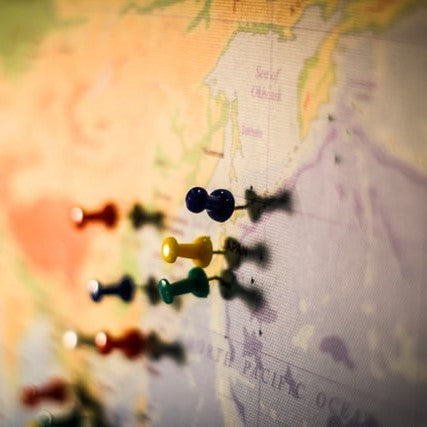
The World of Coffee
Share
Wherever you look at the history of modern times, if you look closely enough, you will find traces of coffee. Coffee has been a great motivation for many events in history; it is no mystery that crops such as coffee were a major driving force for colonization. But it was coffee that set off a big movement in the world that still impacts our day-to-day living.
But to first understand coffee, let’s look at its history from the very beginning.
Africa

Just like the modern human or homo sapiens, we can trace the first signs of coffee farming all the way back to Ethiopia. This African country has the most numerous naturally occurring varieties of the coffea plant in the whole world, and the history of coffee drinking in this country precedes written history, so we cannot know for sure how long coffee was a part of this continent’s daily life before it made an appearance in Middle Eastern written texts circa the 15th century.
A legend of the Oromo people, native to Ethiopia, says that “While Waqa, god of many names, still walked the earth, he witnessed the death of a man. Moved by the tragedy of death, he shed a single tear, which fell upon the earth. From this spot, the coffee plant emerged”. While not to be taken as factual evidence, it shows that the presence of coffee in the culture is so important that it makes an appearance in its mythology.
Coffee is nowadays one of the main industries in Ethiopia, and is also one of the main crops in other African countries, such as Uganda, Ivory Coast, and Kenya.
In Ethiopia alone, the industry employs more than 10 million people. Coffee from Kenya and Ethiopia are regarded as some of the best in the world.
Check out our Ethiopian single origin coffee here: https://bit.ly/2ZRhUKg
Middle East

A Sufi monk was on a pilgrimage from Morocco to Yemen. While on his way, alone, he was meditating while a herd of goats encountered him. He continued his meditation in complete stillness while he watched the goats. They nibbled on a fruit that was unknown to him; Must not taste that good, if the herder let the goats eat it.
But soon after, he witnessed the goats playing energetically, running around, and he made the connection. He consumed some of this fruit himself and continued to meditate for the night with incredible ease. So he decided to bring the beans of this fruit with him to Yemen.
And it was in Yemen, no more than a century after, where coffee would be distributed to the rest of the world. In fact, so much coffee was shipped from Yemen that you probably recognize the name of the port city from which it was shipped: Mocha.
That’s right: Mocha was a name that stuck, since most of Europe came to know of this bean through shipments that came from Mocha.
As coffee slowly became known to the world, during the 16th and 17th century, coffee culture started blooming in this part of the world. Yemen, who still nowadays is rumored to have one of the best, if not the best, coffees of the world, has a rich history of coffee culture which spread to the rest of the area. Then a part of the Ottoman Empire, Turkey also developed a deep love for coffee and was home to some of the fist coffee houses in the world.
The Americas

Central and South America were a great source of food for Europe for many years. But once these regions started claiming independence and sovereignty over their land, many of the crops farmed here became cheaper if grown at home instead of shipping them from one country to another.
But Europeans had a problem: They had developed an immense love for coffee, and coffee can’t be grown in most climates. For coffee to grow, you have to provide high altitudes, stable climate, and temperatures that aren’t neither too high nor too low. As a general rule, you can mostly grow coffee in areas that are neither too close nor too far from the equator. It is truly a delicate plant.
These criteria are impossible to meet in any country where you have 4 clearly defined seasons, since the temperature changes are too much for the plant to take. But in South America, rich in mountainous terrain and high-altitude farms, coffee would find a new home.
And it was mostly during the 18th century when many Europeans, looking to meet the demand of Europeans -who, by the way, were willing to pay many times the price they were used to for coffee- started migrating to Central and South America to buy land and hire farmers to grow their own coffee.
And so, very slowly, coffee started to bloom as an industry in these areas. Today, Colombia is very well known thanks to its high-quality coffee owing to its rich geography. The whole of South America is graced with the presence of the Andes, the longest continental mountain range in the world, spawning several countries in South America. Many of the best coffee of the region is grown near the Andes.
Check out our Peruvian single origin coffee not often talked about but quickly gaining popularity here: https://bit.ly/2BKMe1j
Our most popular Central American single origin coffee here: https://bit.ly/2ZWQbaW
